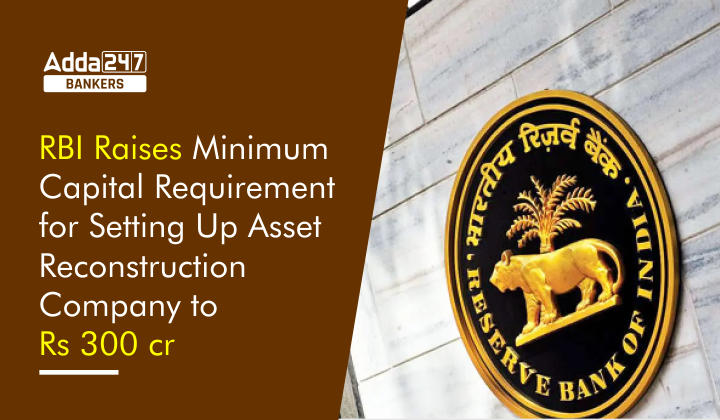Table of Contents
RBI raises minimum capital requirement for setting up asset reconstruction company to Rs 300 cr: The Reserve Bank increased the minimum capital requirement for establishing an asset reconstruction company (ARC) from Rs 100 crore to Rs 300 crore. The decision seeks to enhance the securitization industry, which is critical in the handling of distressed financial assets. Existing ARCs will follow a glide path to fulfill the minimum net owned fund (NOF) criteria until April 2026.
What are modifications made by RBI in the guidelines?
Some of the changes done by RBI in the guidelines for the reconstruction of financial assets are:
- Any ARC receiving a certificate of registration on or after the date of the circular may not begin the asset reconstruction or securitization process without having a minimum NOF of Rs 300 crore.
- According to the previous regulations, each ARC was expected to create a board-approved policy outlining the general criteria for the settlement of debts owed by the borrowers. Moreover, the board was allowed to assign authority to a committee made up of any director or ARC employees to decide on suggestions for dues settlement.
- Now, the payment to the borrower will be made only after the proposal has been reviewed by an Independent Advisory Committee (IAC), which will be made up of specialists with technical, financial, and legal backgrounds. IAC will make recommendations to the ARC regarding the settlement of debt with the borrower after evaluating the borrower’s financial situation, the time period available for recovering the debt, estimated earnings, and cash flows of the borrower, along with other factors.
- An audit committee of the board must be formed by ARCs and must only be composed of non-executive directors.
What do you mean by Asset Reconstruction Company (ARC)?
It is a specialized financial firm that buys non-performing assets (NPAs) from banks and other financial institutions so that they can sort out their balance sheets. This makes it easier for banks to focus on regular banking tasks. Banks can sell the troubled assets to the ARCs at a price that both parties can agree upon rather than wasting time and resources pursuing the defaulters. For the establishment of ARCs in India, the Securitization and Reconstruction of Financial Assets and Enforcement of Security Interest (SARFAESI) Act, 2002 serves as the legal foundation.
What is the SARFAESI Act of 2002?
The SARFAESI Act of 2002 was enacted to protect financial institutions from loan defaulters. Under this rule, banks can take possession of securities pledged against loans, and manage or sell them to recover debts without the participation of a court. The law is applicable throughout the country and applies to all movable and immovable assets pledged as security to the lender.



 Current Affairs Questions and Answers 16...
Current Affairs Questions and Answers 16...
 Current Affairs Questions and Answers 14...
Current Affairs Questions and Answers 14...
 Weekly Current Affairs One-Liners: 08th ...
Weekly Current Affairs One-Liners: 08th ...



